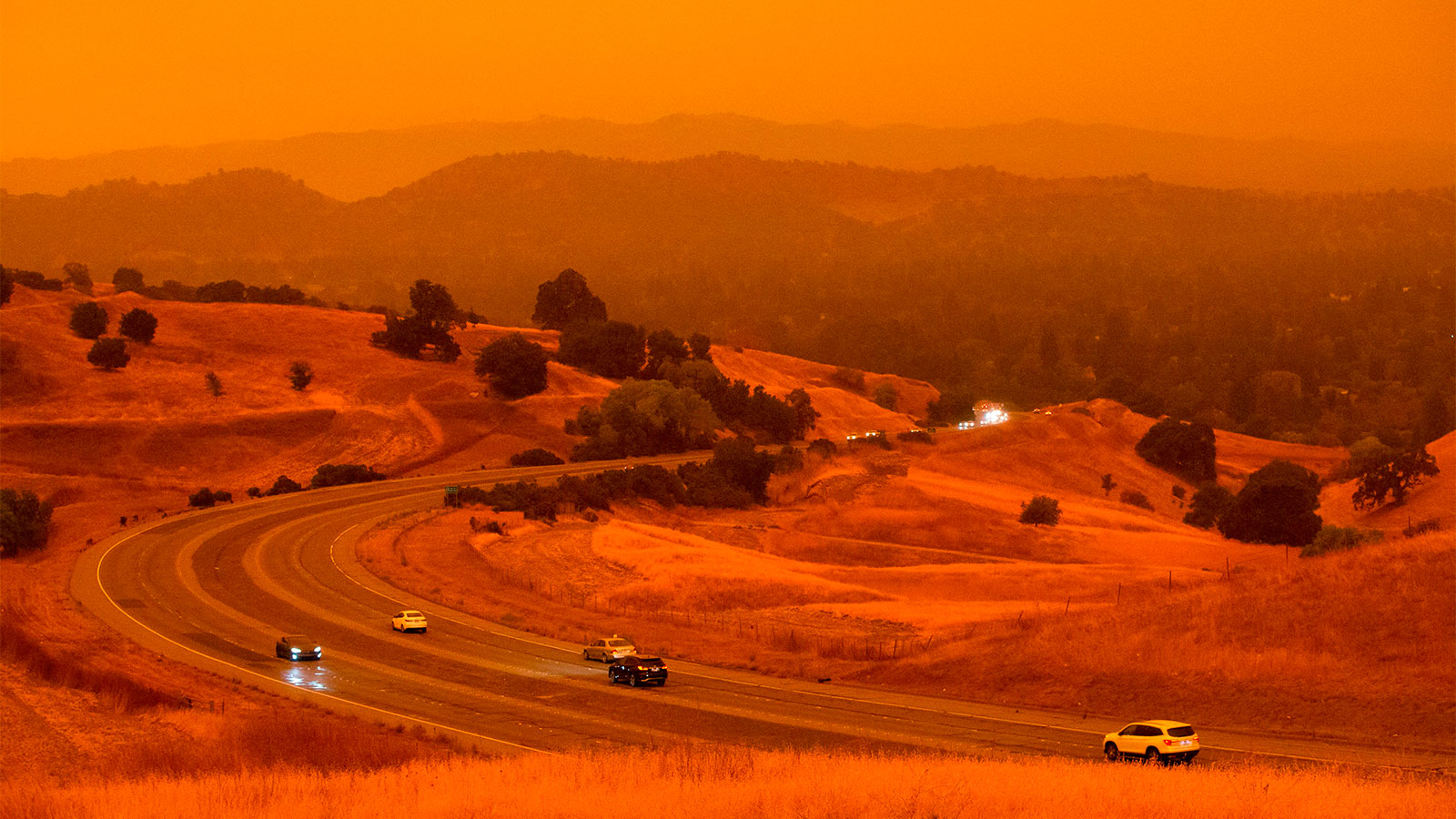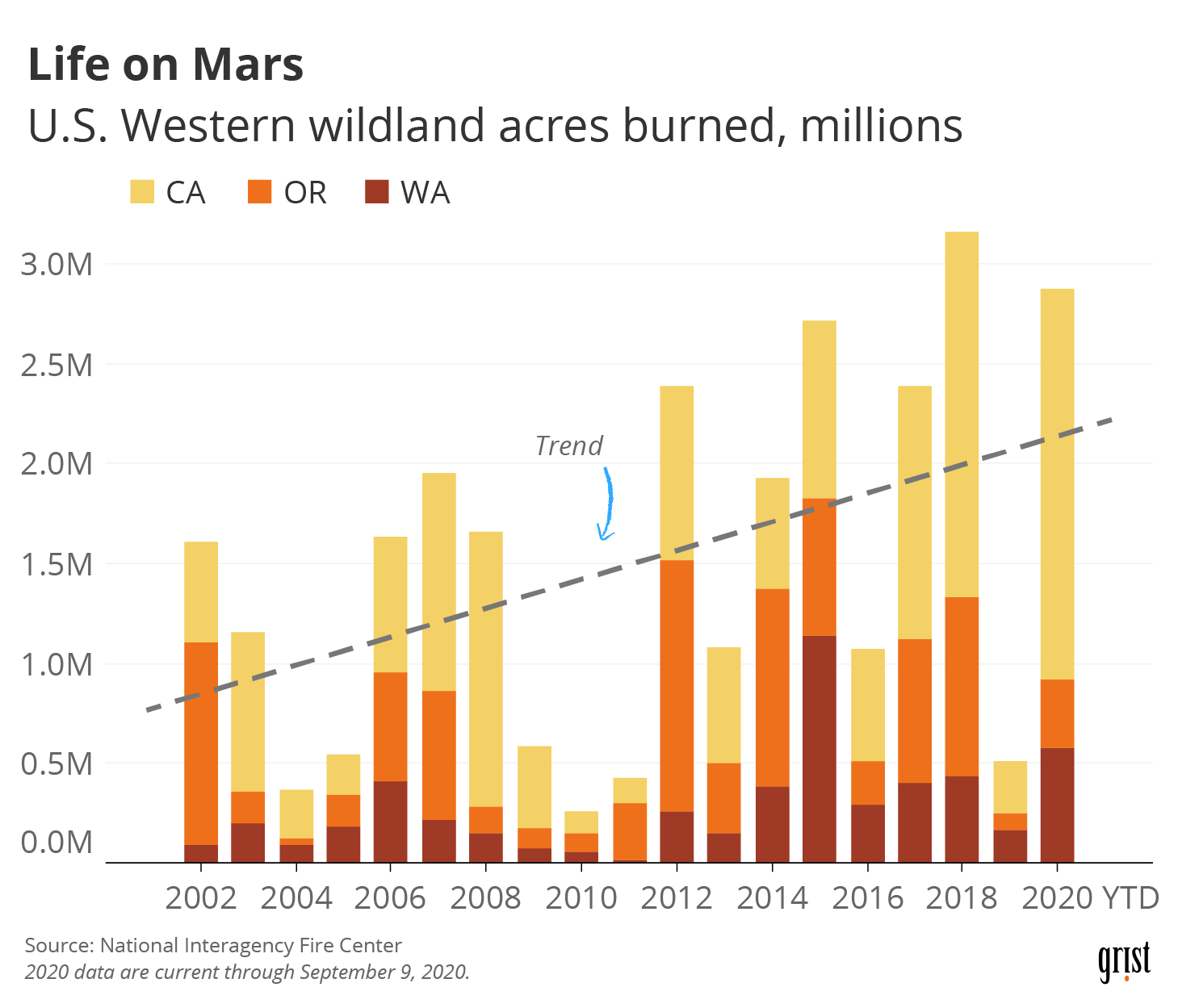It’s still 2020 and the pandemic-slash-climate change apocalypse just got even worse.
The West Coast is burning. As of Wednesday, 24 active fires were reported in California, 12 in Washington, and 14 in Oregon. Residents of the San Francisco Bay Area awoke to dark orange skies, as a thick layer of smoke settled over Northern California. (Smoke scatters blue light, allowing only red and yellow to reach the ground.)

Shrouded by wildfire smoke filtered light, Thomas Spratley (right) and Paulo Santos of Sausalito visit the Marin Headlands in Sausalito, Calif., on Wednesday, September 9, 2020. Scott Strazzante / The San Francisco Chronicle via Getty Images
People shared photos online that made their formerly warm and sunny neighborhoods look like the surface of Mars. The Bay Area branch of the National Weather Service also entreated the public to keep them informed: “This is beyond the scope of our models so we rely on your reports!” the service tweeted.

Cars drive along Ygnacio Valley Road below an orange sky filled with wildfire smoke in Concord, California on September 9, 2020, as a hazy-looking Walnut Creek can be seen in the distance through the smoke. BRITTANY HOSEA-SMALL / AFP via Getty Images
It’s hard to overstate how really, terribly bad this fire season has been. In California alone, wildfires have blown through 2.5 million acres of land since the beginning of the year — about 10 times more than last year, and much more than 2018’s previous record of 1.8 million acres. Meanwhile, in Washington state, fires erupted over Labor Day weekend, scorching 330,000 acres in just 24 hours. The smoke led cities across the West Coast to warn their residents to stay inside and keep windows closed to avoid breathing some of the dirtiest air in the world.
A California plan for wildfires that actually matches the scale of the problem
Taken together, Oregon, Washington, and California have already seen enough acreage burned in 2020 to rival previous record-breaking years — and there’s still a month left in the fire season. A spokesperson for the National Interagency Fire Center, which maintains statistics on wildfires across the United States, told Grist that staffers are having trouble updating records fast enough to account for all the blazes. It’s yet another example of clear trend over the past two decades: West coasters are getting used to choking on smoke for much of the summer.

Clayton Aldern / Grist
One of the reasons, of course, is climate change. High temperatures dry out vegetation and the surrounding air, making wildfires more likely to burn fast and hard. The fire season has also lengthened. What was once a four-month season has stretched to six or even eight months in some regions of the U.S., according to the Forest Service.
How climate change fuels California’s biggest fires
That might mean that the worst is yet to come. In 2018, fires in California continued to burn until late November, thanks to hot, dry autumn winds; by the end of the year, residents had gotten used to hiding indoors. Unless we get a handle on climate change soon, the West in the summer is going to feel more like a burning hellscape than a paradise. But enjoy the dark red sunsets and, hey, at least this time everyone already has masks!


